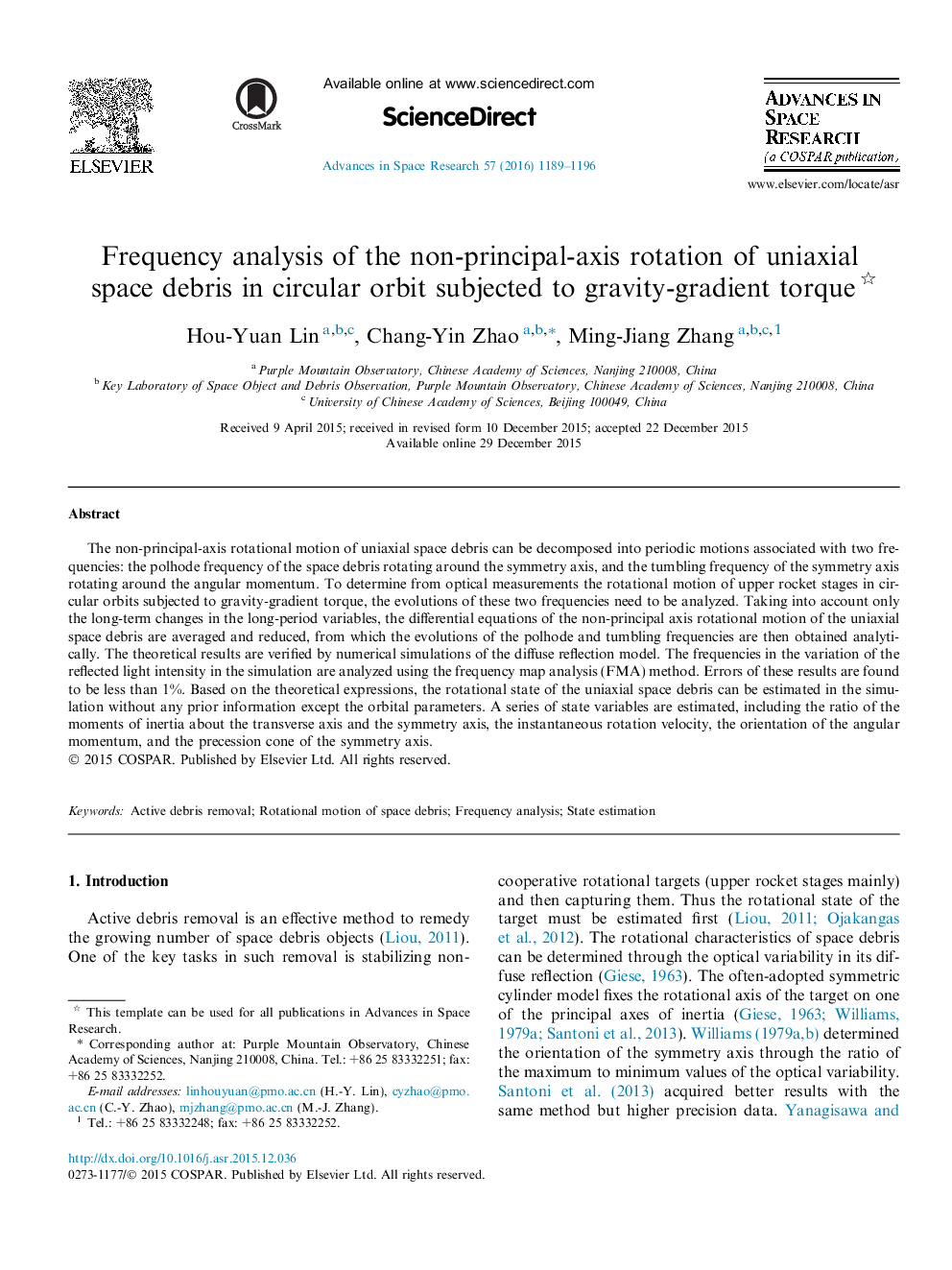| Article ID | Journal | Published Year | Pages | File Type |
|---|---|---|---|---|
| 1763804 | Advances in Space Research | 2016 | 8 Pages |
•The evolutions of the polhode and tumbling frequencies are obtained analytically.•The theoretical results are verified by numerical simulations and errors are less than 1%.•The rotational state can be estimated with prior knowledge of only orbital parameters.
The non-principal-axis rotational motion of uniaxial space debris can be decomposed into periodic motions associated with two frequencies: the polhode frequency of the space debris rotating around the symmetry axis, and the tumbling frequency of the symmetry axis rotating around the angular momentum. To determine from optical measurements the rotational motion of upper rocket stages in circular orbits subjected to gravity-gradient torque, the evolutions of these two frequencies need to be analyzed. Taking into account only the long-term changes in the long-period variables, the differential equations of the non-principal axis rotational motion of the uniaxial space debris are averaged and reduced, from which the evolutions of the polhode and tumbling frequencies are then obtained analytically. The theoretical results are verified by numerical simulations of the diffuse reflection model. The frequencies in the variation of the reflected light intensity in the simulation are analyzed using the frequency map analysis (FMA) method. Errors of these results are found to be less than 1%. Based on the theoretical expressions, the rotational state of the uniaxial space debris can be estimated in the simulation without any prior information except the orbital parameters. A series of state variables are estimated, including the ratio of the moments of inertia about the transverse axis and the symmetry axis, the instantaneous rotation velocity, the orientation of the angular momentum, and the precession cone of the symmetry axis.
